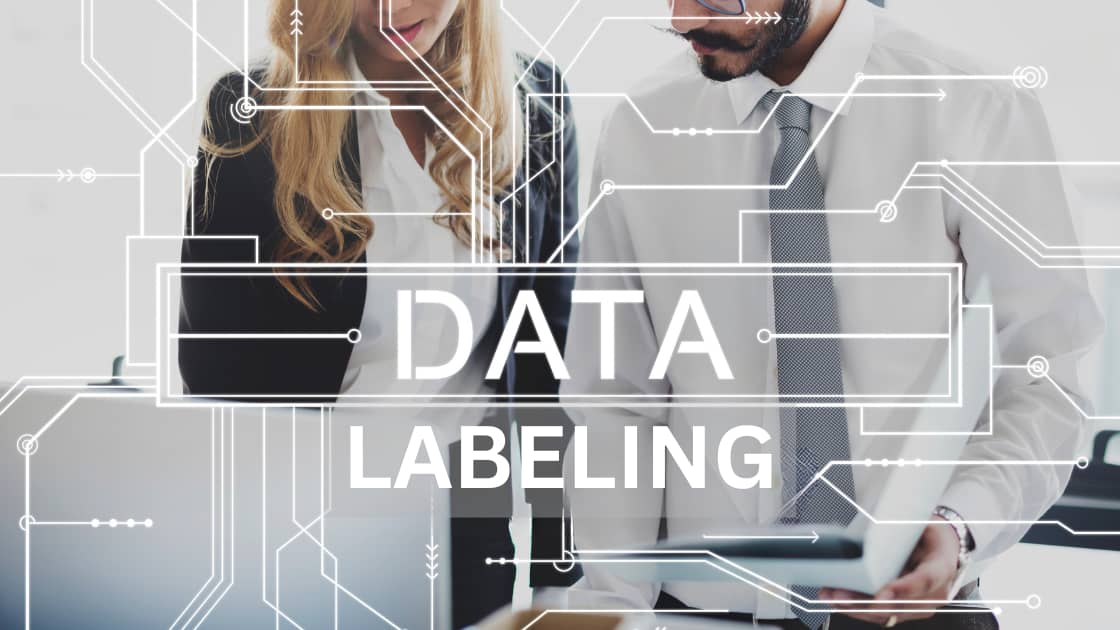



March 8, 2023
In today’s digital world, data is everywhere. From social media to e-commerce websites, businesses are constantly collecting vast amounts of data from various sources. However, collecting data is only half the battle; analyzing and making sense of it is the real challenge. That’s where data labeling comes in. Here is a complete guide to data labeling where we’ll explore what data labeling is, how it works, and its importance in various industries.
Data labeling is the process of categorizing and tagging data to make it understandable and usable for machines. In simpler terms, it is the process of adding labels or annotations to data to identify specific features or patterns. For example, if you want to create a machine learning algorithm to recognize cats in images, you need to label the images that contain cats as “cat” and those without cats as “not cat.” This process allows the machine to learn the characteristics of a cat and identify it in new images.
The process of data labeling involves several steps, including:
The first step in data labeling is collecting the data. This data can come from a variety of sources, including sensors, social media platforms, e-commerce websites, and more.
Once the data is collected, annotation guidelines are created. Annotation guidelines are a set of instructions that specify how the data should be labeled. These guidelines include information such as what features to label, how to label them, and how many annotators are required.
After the annotation guidelines are established, the data is annotated. This process involves adding labels to the data based on the guidelines. The data can be annotated by humans or by using automated tools.
Quality control is an essential step in the data labeling process. It ensures that the data is accurately labeled and meets the quality standards set in the annotation guidelines. Quality control can be achieved by reviewing a sample of the labeled data to identify any errors or inconsistencies.
Data labeling is an iterative process. If errors or inconsistencies are found during quality control, the annotation guidelines may need to be revised, and the data may need to be re-annotated.
Labeled data and unlabeled data are two different types of data used to train ML models.
Labeled data is data that has been pre-annotated or marked with tags that indicate the correct answer or output. In other words, labeled data is data that has been labeled with a specific category, class, or tag that corresponds to a known outcome. Labeled data is often used to train machine learning models so that they can learn how to classify new data based on the patterns in the labeled data. For example, in a supervised learning task, labeled data is used to train a machine learning model to classify images of dogs and cats.
On the other hand, unlabeled data is data that has not been pre-annotated or marked with tags. Unlabeled data is often used in unsupervised learning tasks where the goal is to find patterns or relationships in the data without a predefined outcome or output. For example, in an unsupervised learning task, unlabeled data might be used to cluster customers based on their purchasing behavior.
The key difference between labeled and unlabeled data is that labeled data has a predefined outcome or output, while unlabeled data does not. Labeled data is often used in supervised learning tasks where the goal is to train a machine learning model to predict or classify new data based on the patterns in the labeled data. Unlabeled data, on the other hand, is often used in unsupervised learning tasks where the goal is to find patterns or relationships in the data without a predefined outcome or output.
Here are some of the most common data labeling approaches:
It is an approach to data labeling where companies use their own internal resources to label data sets. This can include employees or contractors who have the domain knowledge and expertise to accurately label data according to specific requirements. Internal labeling is typically used when companies have sensitive data or when they require highly specific labeling criteria that may not be readily available through external labeling services.
It is an approach to data labeling that involves the use of artificial intelligence (AI) algorithms to automatically generate labels for data sets. This approach is typically used when there is a shortage of labeled data available, or when the cost of manually labeling data is prohibitive.
It is a data labeling approach that uses pre-defined rules and algorithms to automatically label data sets. This approach is typically used when there is a large volume of data that needs to be labeled quickly, or when the labeling task is relatively straightforward and can be easily automated.
This approach of data labeling is used by many companies to save time and money while ensuring high-quality labeled data sets. In outsourcing, a company contracts with a third-party service provider to handle the data labeling process on its behalf.
This is another popular approach to data labeling that involves outsourcing the task to a large group of people, typically via an online platform. In crowdsourcing, data labeling tasks are posted to an online platform where workers from around the world can sign up to perform the work.
Here are a few reasons why data labelling is important:
Data labeling is essential for training machine learning models. By labeling the data, the machine can learn to recognize patterns and make predictions. This, in turn, can help businesses make informed decisions and improve their operations.
Data labeling can also improve the customer experience. By analyzing customer data, businesses can understand their needs and preferences and tailor their products and services accordingly. This can lead to increased customer satisfaction and loyalty.
Data labeling can also enable predictive analytics. By analyzing past data, businesses can make predictions about future trends and events. This can help them plan and prepare for future challenges and opportunities.
While data labeling is an essential step in creating high-quality data sets for machine learning, it is not without its challenges. Here are some of the most common challenges of data labeling:
Data labeling can be a time-consuming and expensive process, particularly when large amounts of data need to be labeled. In some cases, it may be necessary to hire a team of annotators to label the data, which can further increase costs.
Ensuring the accuracy and consistency of the labeled data is crucial for the success of machine learning models. However, human annotators may make mistakes, misunderstand labeling instructions, or introduce bias into the labeling process. Quality control measures such as inter-annotator agreement and spot-checking can help mitigate these issues, but they add an additional layer of complexity to the labeling process.
Some data labeling tasks require subjective judgments that may vary depending on the individual annotator’s background, experience, or personal biases. For example, labeling the sentiment of a text may be influenced by the annotator’s cultural background or personal beliefs.
To ensure that data labeling is done effectively, businesses should follow these best practices:
Clear annotation guidelines are critical to ensure consistency and accuracy in data labeling. Annotation guidelines should include detailed instructions on how to label the data, as well as examples of how to label different types of data points.
Using multiple annotators is an effective way to ensure that the labeled data is accurate and consistent. Multiple annotators can also help identify and correct errors or inconsistencies in the labeled data.
Providing adequate training to annotators is essential to ensure that they understand the annotation guidelines and are able to label the data accurately. Training should include examples of how to label different types of data points, as well as feedback on the quality of their labeled data.
Quality control measures such as inter-annotator agreement and spot-checking are essential to ensure that the labeled data is accurate and consistent. Quality control measures can help identify errors or inconsistencies in the labeled data, which can then be corrected.
Annotation guidelines should be continuously improved based on feedback from annotators and the performance of machine learning models. By improving annotation guidelines, businesses can ensure that the labeled data is more accurate and relevant, which can improve the performance of their machine-learning models.
Automating the data labeling process can help improve efficiency and accuracy, especially for large datasets. Automation techniques such as computer vision and natural language processing can be used to label data more quickly and accurately than manual labeling.
Monitoring the performance of machine learning models is essential to ensure that the labeled data is accurate and relevant. By monitoring model performance, businesses can identify areas where the labeled data may need to be improved, and can adjust their data labeling processes accordingly.
Data labeling has a wide range of use cases across various industries. Some of the common use cases for data labeling are:
Data labeling is essential for training computer vision models, which are used in a variety of applications such as self-driving cars, security cameras, and medical image analysis. Data labeling helps in identifying and classifying objects, recognizing shapes and patterns, and segmenting images.
Data labeling is critical for training NLP models, which are used for sentiment analysis, chatbots, and language translation. Data labeling helps in identifying and classifying different elements of text, such as named entities, parts of speech, and sentiment.
Data labeling is used in e-commerce applications to classify products, recommend products to customers, and improve search results. Data labeling helps in identifying and classifying products based on attributes such as color, size, and brand.
Data labeling is crucial for the development of autonomous vehicles, which rely on computer vision and sensor data to navigate roads and avoid obstacles. Data labeling helps in identifying and classifying objects such as pedestrians, vehicles, and traffic signs.
Data labeling is a crucial process in today’s data-driven world. While data labeling can be a time-consuming process, its benefits far outweigh the costs. By investing in data labeling, businesses can unlock the full potential of their data and gain a competitive edge in their industry.
Read more: